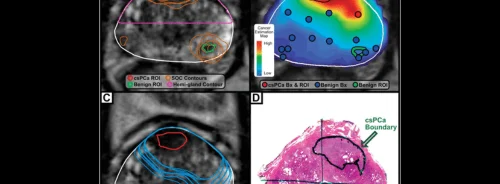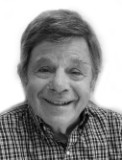HealthManagement, Volume 12 - Issue 2-3, 2012
Recently, the Organisation for Economic Cooperation and Development (OECD) provided to the public annual health-related data from 1960 to the present for its 34 member countries – 24 in Europe and 10 outside the continent including the United States. Forty-eight separate indices were presented, with one of the most telling statistics being the yearly percent of healthcare funded by public expenditures. Among European oECD members, Italy at 57 percent had the lowest percent supported by governmental auspices. In contrast, in the United States it was only 47 percent.
The marked difference between US and most other industrialised nations starkly reveals evidence of why the United States healthcare system is unique not only in its cost structure but also in the strategies medical organisations must adopt to survive and even thrive in it. No institution is immune from this imperative, not even academic medicine in general and radiology in particular. Although the spectrum of sources of compensation to sustain American academic radiology departments is wide, for most of them, continued success requires the chairperson to be entrepreneurial in outlook and, to a varying extent, in action as well.
Leadership Vital to Capture Needed Resources
In departments that are entirely hospital-based, equipment, salary and benefits are frequently provided by a single payor, usually the hospital alone or the hospital and the medical school in combination. In these facilities, the chairperson is primarily a manager but he or she can still be innovative in the provision of education, the establishment of research programmes and in the type and extent of collaboration with referring services. Even under these constraints, the ascription of responsibility for various imaging procedures is not fixed but is subject to the operational and the tactical plans of the chairperson vis-à-vis his fellow chairpersons who may be both colleagues and competitors with respect to the capture of new imaging business.
Yet in most departments, a guaranteed source of support for all expenditures and initiatives is lacking, be it for personnel, research, hardware or informatics. The capture of some, or all of it, depends on the skill and assertions of the chairperson as a leader, as one who must establish and sustain competence as a strategist and administrator in each of the major realms that encompass an academic enterprise.
Clinical Practice
In most departments, save those primarily serving the poor and those in which there is a pure salary arrangement to support professional staff, physician incomes, either in part or in whole, come from payments earned by the performance of procedures or the interpretations of images. This requires the chairperson to seek to take in from payors all the moneys his faculty has generated in professional fees for work done. Hence, an efficient collection system is necessary to harvest as much of the dollars sown by the department’s professional services. The size of the population in the catchment area in which most patients are referred to the department will help anticipate the scale of revenues. If it serves an affluent region with many prospective patients having adequate private or employer-supported insurance, then the department is at an inherent advantage to grow as long as the national or local economy has not turned negative.
Moreover, if the patient mix includes a high percentage of elderly patients who possess generally adequate reimbursement from Medicare and other sources, then there is another available and reliable income stream to support the chairpersons and his staff. But the chairpersons must first realise that his or her department is not the only place a referring physician will send the sick and injured. Hence, the chairpersons must endeavour to market the department’s products well, to provide excellent customer service and to introduce and manage new product lines that are attractive to clinicians and patients.
Economic Differences: EU Versus US
A natural tension, however, is built into this business arrangement - one that in large part is emblematic of the high aggregate cost of medicine in the US when compared with the determinants of expenditures in most European countries. While the chairperson must promote appropriate, judicious imaging based on sound clinical indications on the one hand, he or she must also serve the bottom line. Thus, there is also the tendency to encourage more imaging and, ineffably or by design, to promote increased and sometime excessive utilisation. In great measure, an extravagant reliance on imaging is a significant component of the high cost of Medicare in the U.S. And to a large extent it is within the chairperson’s purview.
Most chairpersons realise that siting their department only in a hospital limits growth and binds the department snugly to the hospital’s economic activity and prospects. In this era of consolidations and closings of in-patient facilities throughout the US, an exclusively hospital-based department is extremely vulnerable. Thus chairpersons will attempt to look for opportunities to participate at outpatient radiology practices. These can either be owned and managed by outside companies, or the department itself will own and run them. This stratagem tends to expand revenue options and, when successful, enables the department to grow. By so doing, it can bring on board more subspecialists, thereby widening the department’s capacity to realise opportunities in education and even in research.
Another goal of the chairperson in this regard is to take control, whether through direct investment or through prudent deal making, of part or all of the technical fees derived from the performance of high technology procedures utilising CT, MR, PET or interventional radiology. For many procedures and from most payors, the technical fee - the payment to reimburse for the cost of the purchase of the machine, as well as its service, maintenance and depreciation - is much higher than the professional fee per imaging study. Hence often the biggest payoff per investment accrues to those who have purchased all or part of the devices in which relatively generous payment is made at least in respect to their technical component.
So for the securing of clinical income, the most successful departments are those having a stake in several outpatient centres and a piece of the technical fee in modalities in each one.
Education and the Workforce
Unlike many European countries in which the education of trainees is focused toward the production of general radiologists, some of whom may later become subspecialists, in the US, currently more than 90 percent of residents in radiology not only achieve board certification at the completion of their four-year training term, they also pursue and complete an additional year or two in a dedicated fellowship programme. The curriculum for residency training is highly prescriptive and supervised by a national organisation, the Accrediting Council for Graduate Medical Education, (the ACGME), and approximately 50 percent of fellowship programmes are also under the constraints of ACGME’s regulations. For the most part, chairpersons seek to have as many residents as their clinical and tutelary capabilities can manage.
Many of the larger departments also try to have as many fellows as they can. Some chairpersons even regard fellows as more desirable than residents with regard to meeting their clinical and investigational initiatives. Why? Even though first year residents are in a sense burdens because of their limited knowledge, they become benefits as they advance through their multi-year term of training. Better still are fellows who can assume more responsibility immediately, and even in large measure function independently as interpreters of imaging studies and as researchers. Residents and fellows are paid very little when compared with the salaries earned by faculty members. Through Medicare, many trainee salaries are in essence free goods because their salaries are supported by Medicare reimbursement provided that elderly patients comprise a share of hospital admissions.
The larger the number of older patients a hospital has, the more the institution is paid per trainee. Although the number of Medicare supported trainee positions was fixed in 1996, radiology resident and fellowship positions have increased by 50 percent since. Therefore, even if departments have to pay their trainees' salaries, they are still so low that adding more of them is usually an excellent bargain for the department.
Funding of Imaging Research
It is a tacitly acknowledged obligation of academic radiology departments to participate in grant-funded research. In fact many chairpersons will look at increasing grant revenues as one mark of the department’s success inasmuch as Deans themselves are also measured by this metric. The record over the 15 years of funding of imaging research supported by the National Institutes of Health (NIH) has revealed a steadily increasing allocation of funds for imaging investigations, for many of which the grantee was a professional member of a department of radiology in an academic institution. Industry, too, supports imaging research. Consequently the chairperson must develop personnel and institute policies that foster the department’s efforts to win such awards. He or she can seek to have the medical school build and staff special facilities and equipment that will promote the securing of grants. But he or she must also recruit and help nurture the faculty who will conduct the research.
The chairperson can do that by giving their radiologists protected time each week to pursue their ideas and reify them into completed preliminary studies that can form the basis for a successfully funded grant proposal. And the chairperson must also recruit and support PhDs, some at the earliest phases of their careers as well as others who are already seasoned investigators. The latter may have begun their work elsewhere and could be attracted to a chairperson’s department by offers of generous terms involving salary support, personnel positions and laboratory space. By and large, PhDs are less expensive than radiologists. For that reason, they can provide the department a faster pay off in terms of research dollars accrued and prestige earned per professional hired.
Conclusions
In sum, the chairperson of radiology in the US must assume multiple responsibilities. He or she needs to possess organisational and personal relationship skills. At the same time he or she must know how to delegate, how to inspire, how to listen and how, at times, to be bold in response to or despite advice. But most importantly, the chairperson must have a vision, a realistic yet optimistic sense of mission to develop the department’s capability to meet the tripartite obligations of state-of-the-art clinical service, effective medical student and graduate education and the creation of new knowledge through the stimulation and sustenance of innovative research.






